Laptop Mag Verdict
Tripp is a mind-bending VR meditation app that aims to reduce users’ anxiety, cultivate calm feelings, target insomnia — all while sending users on virtual acid trips.
Pros
- +
Trippy experiences sans mind-altering substances
- +
Based on scientific research
- +
Aims to reduce anxiety and increase focus
- +
Reasonably priced
- +
New content added daily
Cons
- -
Low-fidelity hardware hinders it from greatness
Why you can trust Laptop Mag
There you are floating around in a dazzling, colorful kaleidoscopic abyss with shifting geometric shapes. Magical trails of fairy dust whiz past you like shooting stars, and a hypnotic, godlike voice fills the void, evoking inner calm and relaxation. No, you’re not dreaming — and you didn’t take any hallucinogenic drugs, either.
You’re hovering inside Tripp, a VR app touted as one of the best meditation apps of the metaverse.
- The best VR-ready laptops of 2022
- The best laptops of 2022
While I joke that Tripp makes you feel like you’ve taken one too many ‘shrooms, the app has a bonafide healthful purpose in that it’s designed to reduce anxiety, cultivate a sense of inner relaxation, and most importantly (at least to me), manage depression.
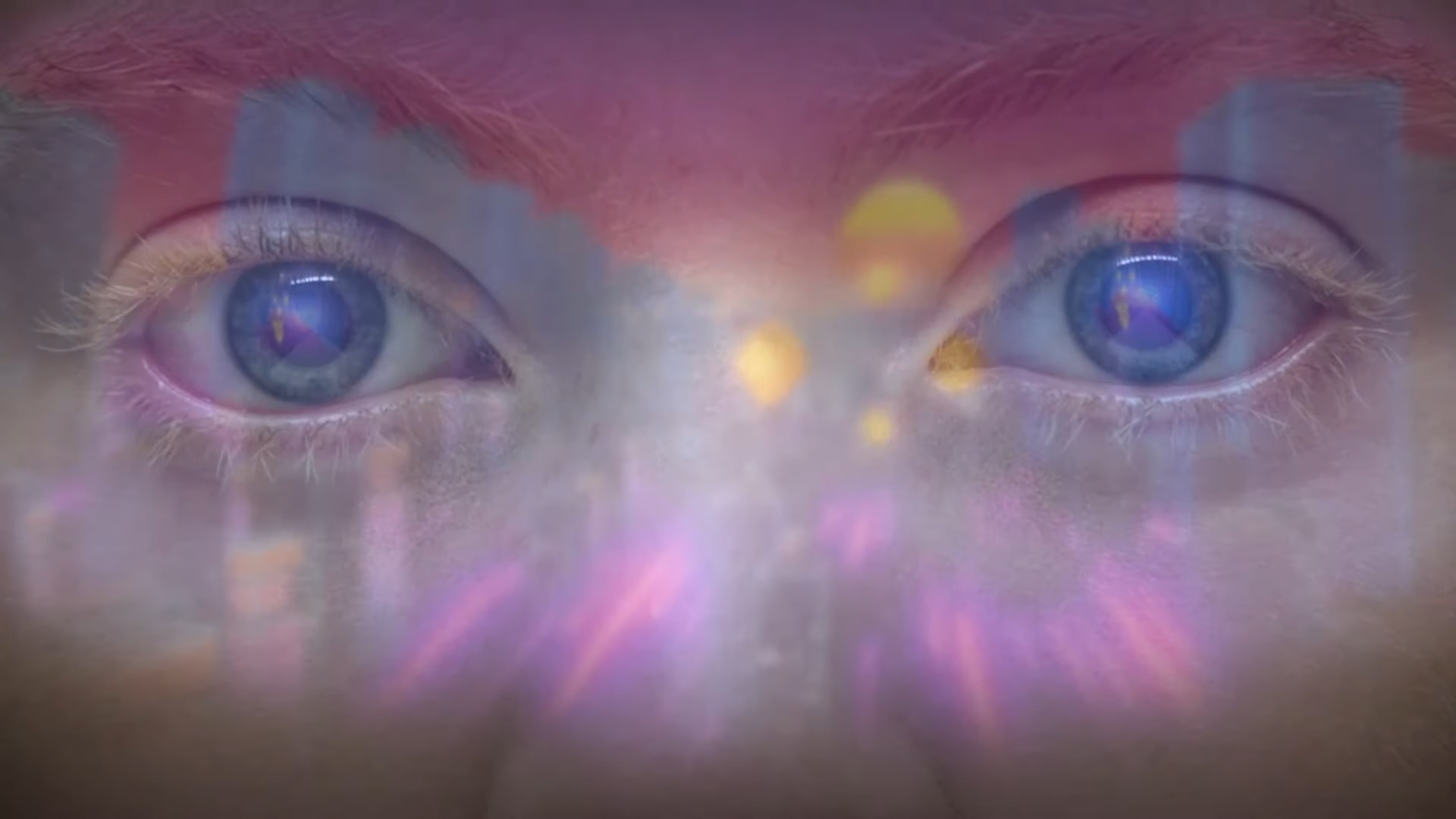
Although I didn’t know Miss USA 2019 and “Extra” host Cheslie Kryst personally, her recent death (ruled a suicide after she jumped off her Manhanttan high-rise building) hit me like a ton of bricks. I’ve suffered from depression before, and while we’re encouraged to talk to someone or seek mental-health therapy, the hindering “Why bother? No one will understand me anyway!” thoughts often block us from taking those steps.
After completing the free demo inside Tripp, I watched a testimonial from a young man who claimed the app helped him overcome depression — and I can see why he used it as an outlet. Tripp isn’t a human being that may struggle to relate to you, nor will it dismissively wave you away and say, “Just think positively for chrissakes!” Instead, it’s a fantastical world where you can safely escape the anguish of harsh realities sans running to mind-altering substances.
Of course, the folks behind Tripp make it clear the app isn’t meant to substitute professional mental health care, but it works well as a supplemental part of your mind, body and soul wellness routine. Without further ado, let me give you the rundown of my experience with Tripp.
Tripp VR price and value
Tripp offers two subscription tiers: a $4.99 monthly option and a $19.99 yearly membership. If you’re ready to go all in, you can pay $34.99 for lifetime access to the app.
Sign up to receive The Snapshot, a free special dispatch from Laptop Mag, in your inbox.
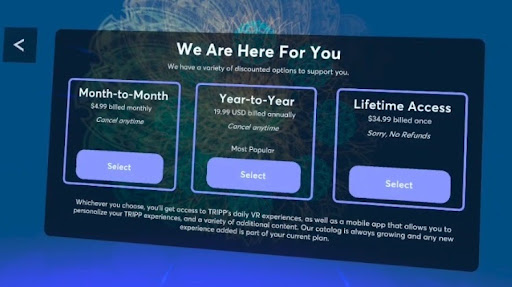
Each Tripp offering comes with the following:
- Access to more than 40 immersive meditative experiences with new additions dropped into the app regularly
- Tripp Composer, a feature that lets you design and customize your own sessions
- A tracking feature that lets you chronicle your moods and mental well-being
- Tripp’s mobile companion app
- Unlock worldscapes that change daily
- Daily Focus and Calm sessions
If you’re not ready to commit to Tripp just yet, you can explore the demo to get a taste of what the meditative VR app offers. As of this writing, Tripp is compatible with the Oculus Quest and Rift series, HTC Vive Flow and PlayStation VR. I used the Oculus Quest 2 to experiment with Tripp.
How Tripp VR uses ‘worldscapes’ to calm your mind
Tripp whisks you away into psychedelic virtual realms called “worldscapes'' that are reminiscent of Disney’s “Fantasia.” Although you’re not moving in real life (Tripp encourages users to sit for these experiences), you can feel a sense of buoyancy as you float inside 360-degree dimensions filled with striking, fractal animations, nebula-esque environments, or fantastical, peaceful landscapes.

These worldscapes are hypnotic — as if someone was dangling a yo-yo in front of my face whispering, “You are very sleepy!” The visuals are spell-binding and mentally soothing for the most part, but sometimes they can lean more toward the weird side (like most acid trips).
The VR app is aptly named because these worldscapes are, indeed, “trippy.” These hallucinatory, fanciful, kaleidoscopic realms are paired with something called “binaural audio,” a technology that increases the spatial realism of soundwaves. In other words, binaural audio tricks your senses into believing that the ambient sound is “surrounding” you. According to Healthline, binaural audio reduces anxiety, increases focus and diminishes stress, which is likely why the Tripp team added this auditory tech to the wellness platform.

I don’t know what Tripp puts in its binaural music, but it just does something to me — it puts me in a trance that paralyzes me (in a good way) from head to toe. One of my greatest flaws is that I tend to lose interest quickly and focus is typically a struggle, but this binaural audio stuff stupefies you into a hypnotic state and encourages you to pay attention and remain present.
The Washington Post described Tripp as a "meditation-meets-a-video-game-meets-a-Happy-Pill" app, and that couldn't be more accurate. Tripp is, by and large, a meditation app, but it also involves some unique gameplay, too, with a booming, godlike voice that guides you through the intoxicating, mind-bending experience.
Tripp VR has some gameplay, too
I know what you’re wondering, “What kind of games could a meditation app possibly have?” Well, remember those worldscapes I told you about? They aren’t just “trippy” realms with mandala and fractal art animations. Some worldscapes hand you an aerial artifact that you can steer with your head movements. For example, if you tilt your head to the right, the object will float to the right. Tilt your head to the left, and of course, the object will follow suit.
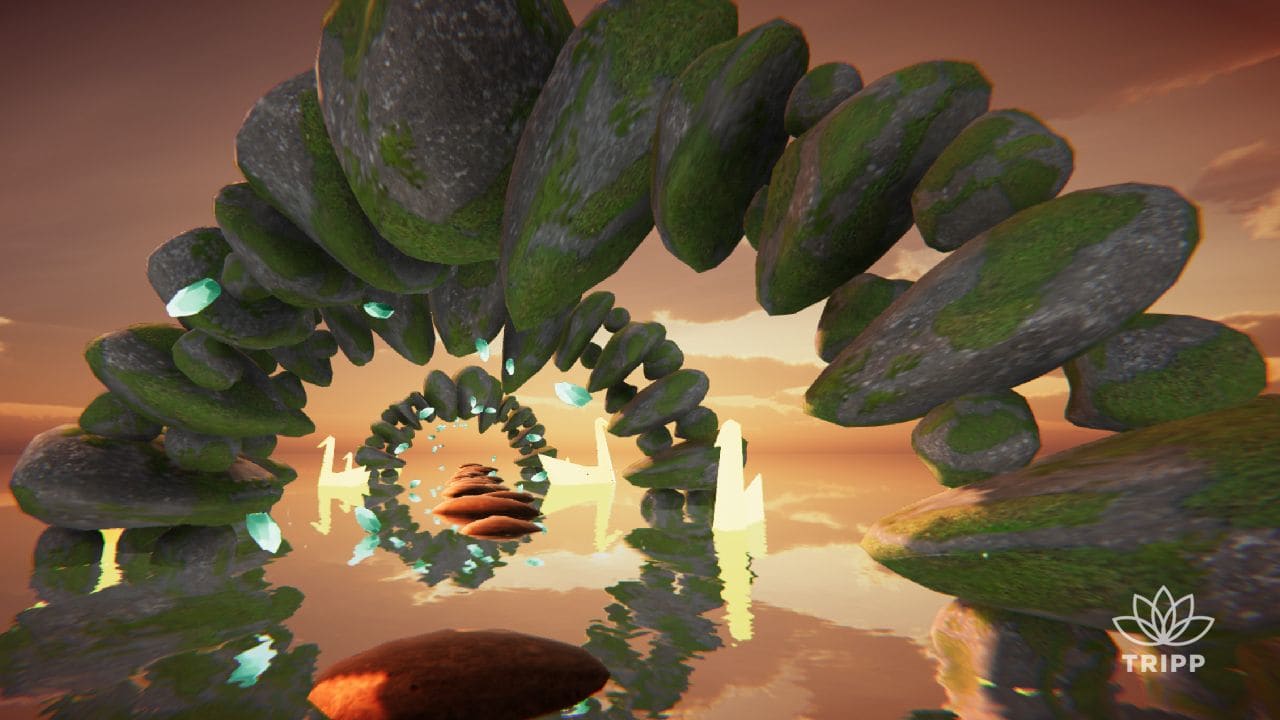
You can subtly move your head in different directions to avoid incoming obstacles, which adds to Tripp’s fun. At first, it wasn’t immediately clear how these games helped calm one’s nerves. Floating inside a strange, fantasy world while dodging flying impediments isn’t my idea of relaxation, but oddly enough, it did have a sedative effect. As it turns out, the method behind this madness is to teach users how to overcome hardships in real life without stressing yourself out.
How to use Tripp VR
After firing up the Tripp app, you’ll land on a home screen with an eye-catching, interstellar background and soothing, ambient music. There are three prominent options to choose from: Focus, Composer and Calm.

Focus
Selecting the Focus option lets you enjoy an eight-minute session that, as the title suggests, improves your concentration and attentiveness. The Focus experience changes daily. When you hover your pointer over the Focus option, a sun icon appears, indicating that this is an experience best suited for early mornings. Focus requires active participation from its users while they drift through a consciousness-expanding void.
A booming, celestial voice guides you through the mindful experience, which kicks off with a unique, fascinating breathing exercise. During my Focus session, a snakey trail of fairy-like dust, reminiscent of Tinkerbell’s flight remnants, prompted me to breathe in as it slithered toward me over a murky, reflective lake, but impelled me to breathe out as it wiggled away.
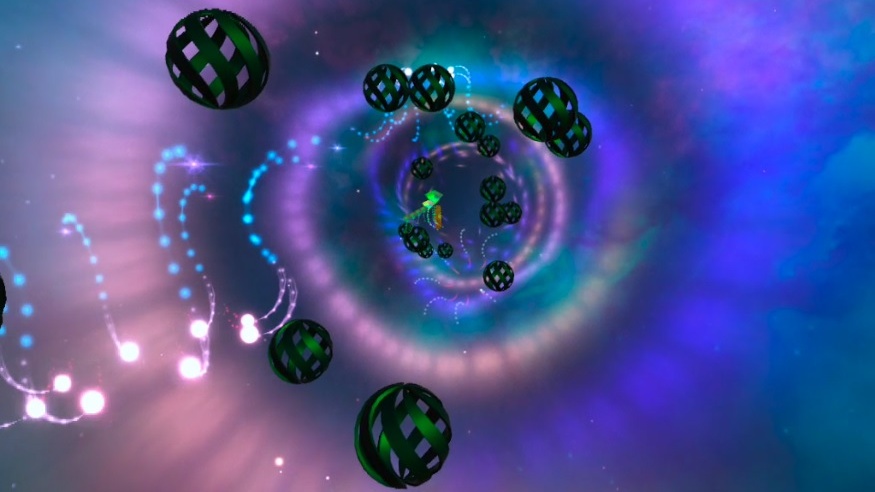
I can’t say that my experience with Focus chipped away at my inattentiveness just yet, but consistency is key, so it may take a couple more sessions with Tripp before I become a master of vigilance and conscientiousness.
Calm
Now Calm, on the other hand, did exactly what it was designed to do almost instantaneously. As indicated by its crescent moon icon, Calm is beneficial for users seeking inner quietude as night falls. From the dreamy, sparkly orbs floating before me to the distant clouds changing colors like the globs inside a lava lamp, I was already drifting off to sleep just seconds into the session. As a chronic insomniac, the drowsy, lethargic voice helped me succumb to a peaceful, restful slumber.
Composer
Composer is my favorite feature. It lets you customize your own hypnotic, psychedelic journey in the metaverse.
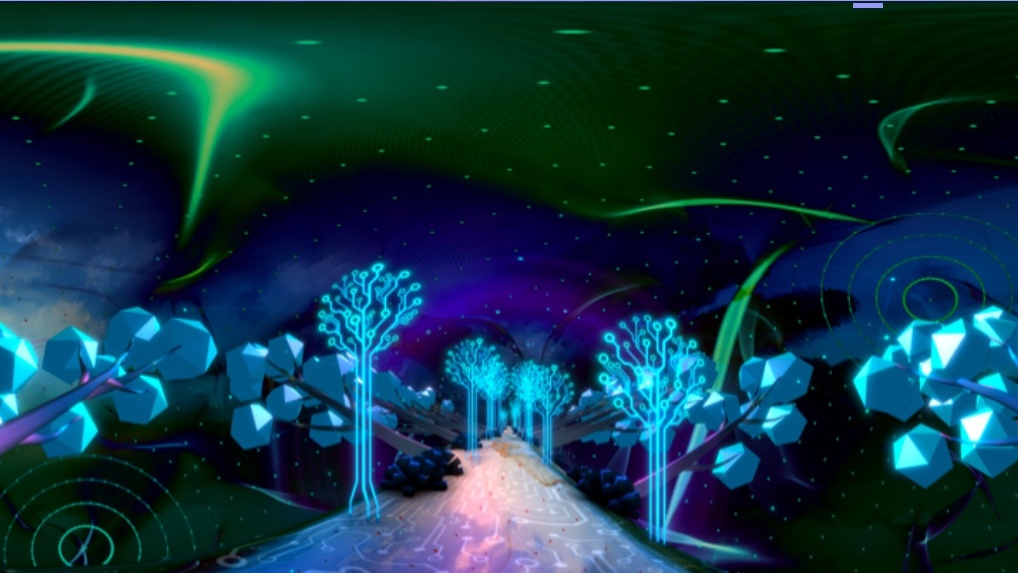
Sometimes, daily Focus and Calm sessions just don’t cut it because we have other mental ailments beyond unmindfulness and anxiety. In this case, you can use Composer to choose from a wide variety of meditations that address several issues, including impatience, anger, trauma, feeling overwhelmed, low confidence, self doubt, and more.
Next, you can choose from several categories of worldscape designs: architectural, cosmic, ethereal, geometric, nature, psychedelic and seascapes. The nature one is my favorite — you can never go wrong with magical meadows and quartz caves. Once you’ve selected a whimsical worldscape and a guided meditation that addresses a targeted issue, your custom, guided meditation will kick off.
Another eye-catching aspect of Tripp is its Ascend portal. Ascend’s content is — erm — interesting to say the least. According to Tripp’s description, it’s designed to “provide a deeper connection to your own life experience, drive personal growth and improve your outlook of the world.” Inside Ascend’s portfolio, I found at 360-degree video titled “Ancient Fire” that follows a barefoot wanderer meandering through a southern Utah landscape with odd rock formations.

At one point, you’ll watch him start a fire using nothing but friction and a stick — and he ends up staring at it for far too long (he’s likely contemplating something “philosophical,” like the meaning of life). Erm, I get why this video is in the Ascend folder. I suppose watching someone be “one with nature” makes you reflect on how you could do the same, but this type of meditative exercise is too abstract for my tastes. It isn’t for me, but I’m sure there are other people who may be into this transcendental stuff.
Did Tripp VR positively affect my mental health?
The truth is, before I launched the Tripp app for the first time, I was thinking, “What kind of new-age nonsense am I about to get myself into?” Although I’ve met a handful of people who swear by the benefits of meditation, I could never get into it — my mind is too erratic. Plus, I get “ants in my pants'' when I sit in silence for too long. As such, I defeatedly accepted that meditation may benefit others, but it doesn’t work for me.
However, Tripp proved me wrong. First of all, the team behind Tripp isn’t some ragtag squad of oddball eclectics who decided to make a bizarre, mind-bending VR app. Instead, Tripp is a carefully curated meditation platform that tapped into the minds of psychiatric and neuroscience advisors to create mentally salubrious experiences with a scientific basis.
On top of consulting with clinicians and other mental-health professionals, the Tripp team also leverages data from scientific journals to inform its decisions on how to optimize its meditative, otherworldly experiences to boost users’ mental well-being (you can find Tripp’s reference research here).
Combined with the genius of trained mental-health professionals and scientific research, Tripp was born. Tripp claims that 93.7% of users who added the VR app to their daily routine saw improvement in their concentration, mindfulness, stress, and most importantly, sleep! As mentioned, I’m an insomniac, so hearing this was like music to my ears.
Tripp VR can add me to their statistics of positively affected users. In my experience, the app’s Calm sessions are most effective for me, causing my eyelids to feel heavy, thanks to a drowsy, lethargic voice that lulls me to sleep. My hyperactive thoughts often keep me up at night, so Tripp’s secret sauce is getting my mind to focus on nothing but what I’m seeing — a dreamy, foggy, delicate worldscape.
How Tripp VR could improve
One aspect of Tripp VR I dislike is more of an Oculus Quest 2 limitation more than anything. In addition to Calm, Focus, Compose and Ascend, there are other content categories such as Meditate, Learn and Escape. The content inside these portfolios often feature 360-degree videos of real-life landscapes and people, but the quality could be better.
Under Learn, I discovered a man discussing the misconceptions of meditation, but I wish the video had higher fidelity; the picture was slightly pixelated and blurry. The same could be said for some videos in the other aforementioned categories (i.e. Meditate and Escape).
Again, this isn’t Tripp’s fault. I blame the Quest 2’s under-powered Qualcomm Snapdragon XR2 chip paired with its underwhelming Adreno 650 graphics. I also spotted some issues where the audio was not syncing with the videos (and I know my high-speed Verizon internet has nothing to do with it). Perhaps Tripp’s video content would perform better on a headset with zippier specs. On the plus side, some of the content in these folders are awe-inspiring, whisking you away to breathtaking landscapes in Norway, Tanzania, Portugal and more.

One final grievance I have with Tripp is that not all experiences can be fast-forwarded, rewound and paused, particularly the Calm and Focus meditations. I know that speeding through content contradicts Tripp’s mission of cultivating patience among its users, but sometimes I just want to get to the good part.
Bottom line
The Calm sessions make Tripp worth it. Gone are the days where I’ll twist and turn in bed hoping for a quiet escape from my overactive mind — Tripp’s got my back.
It’s worth noting that Tripp’s mobile companion app is pretty awesome, too. It prompts you to regularly log your current state of mind, allowing users to choose from 10 moods: Distracted, Inspired, Content, Tense, Focused, Calm, Relieved, Bored, Worried and Upset. The app tracks your mood changes over time to help you determine whether Tripp is having a positive effect on your emotional state. The app also lets you add a “personal touch” to some guided meditations where you can upload your own photos and see them integrated into the Tripp experience.
Tripp may be impeded from achieving total greatness by the Oculus Quest 2’s under-powered internals, but overall, I believe the app is beneficial for users seeking an avante-garde, ultra-modern (supplemental) solution to their mental troubles. The $35 lifetime access to Tripp is totally worth it.
Kimberly Gedeon, holding a Master's degree in International Journalism, launched her career as a journalist for MadameNoire's business beat in 2013. She loved translating stuffy stories about the economy, personal finance and investing into digestible, easy-to-understand, entertaining stories for young women of color. During her time on the business beat, she discovered her passion for tech as she dove into articles about tech entrepreneurship, the Consumer Electronics Show (CES) and the latest tablets. After eight years of freelancing, dabbling in a myriad of beats, she's finally found a home at Laptop Mag that accepts her as the crypto-addicted, virtual reality-loving, investing-focused, tech-fascinated nerd she is. Woot!


